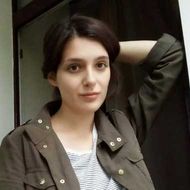See, Feel, and Understand: HSE Researchers to Explore Mechanisms of Movement Perception in Autism

Scientists at the HSE Cognitive Health and Intelligence Centre have won a grant from the Russian Science Foundation (RSF) to investigate the mechanisms of visual motion perception in autism. The researchers will design an experimental paradigm to explore the relationship between visual attention and motor skills in individuals with autism spectrum disorders. This will provide insight into the neurocognitive mechanisms underlying social interaction difficulties in autism and help identify strategies for compensating for them.
Autism spectrum disorders (ASD) are a group of neurodevelopmental conditions resulting from atypical brain development, which can impact communication skills and social behaviour. Individuals with varying degrees of autistic traits may also experience motor difficulties, including impaired muscle tone, reduced movement accuracy and strength, coordination challenges, and underdeveloped balance. The scientists hypothesise that difficulties in social interaction experienced by individuals with ASD may be linked to impairments in visual perception and cognitive processing of movement.
A research team from the Cognitive Health and Intelligence Centre at the HSE Institute for Cognitive Neuroscience, led by Deputy Director of the Centre Anna Izmalkova, will test this hypothesis as part of a project funded by a new grant from the Russian Science Foundation. Andriy Myachykov, Leading Research Fellow at the Institute, will serve as the academic advisor of the study. Research assistants Elena Gavrilova and Ksenia Novoselova will participate in developing the experimental paradigm and collecting data.
As part of the project, the researchers will use eye-tracking technology to examine the specific patterns characteristic of individuals with varying degrees of autistic traits and how these patterns impact their ability to recognise others' movements and emotions. To obtain the most accurate and reliable results, the researchers will develop a comprehensive experimental paradigm that includes a range of stimuli across various contexts, such as daily activities, social communication, and non-verbal expression of emotions.
'An individual's perception of the world is closely linked not only to attention but also to motor skills. For example, someone who moves differently from others may have difficulty interpreting the movements of those around them. Motor coordination issues may be linked to impairments in the functioning of mirror neurons, which are responsible for imitating and understanding the actions of others,' Elena Gavrilova explains.
'We will analyse both movement and gaze direction. An eye tracker allows us to track precisely where a subject is looking—whether they focus on the other's facial features while completing a task with an emotional component or miss key social signals,' adds Ksenia Novoselova.
The authors plan to have everything necessary for the experiment prepared by the end of 2025. 'What makes this grant particularly important to us is that our research extends beyond medical diagnostics. We view autism as a broad spectrum of conditions that do not always fall within the category of clinical cases. This approach allows for consideration of not only impairments but also potential compensatory mechanisms that may be more developed in highly functioning individuals,' explains Novoselova.
The findings from this experiment could potentially be used to develop a technique for training individuals to recognise movements and emotions, helping compensate for social difficulties in autism.
See also:
Scientists Uncover Why Consumers Are Reluctant to Pay for Sugar-Free Products
Researchers at the HSE Institute for Cognitive Neuroscience have investigated how 'sugar-free' labelling affects consumers’ willingness to pay for such products. It was found that the label has little impact on the products’ appeal due to a trade-off between sweetness and healthiness: on the one hand, the label can deter consumers by implying an inferior taste, while on the other, it signals potential health benefits. The study findings have been published in Frontiers in Nutrition.
HSE Psycholinguists Launch Digital Tool to Spot Dyslexia in Children
Specialists from HSE University's Centre for Language and Brain have introduced LexiMetr, a new digital tool for diagnosing dyslexia in primary school students. This is the first standardised application in Russia that enables fast and reliable assessment of children’s reading skills to identify dyslexia or the risk of developing it. The application is available on the RuStore platform and runs on Android tablets.
Physicists Propose New Mechanism to Enhance Superconductivity with 'Quantum Glue'
A team of researchers, including scientists from HSE MIEM, has demonstrated that defects in a material can enhance, rather than hinder, superconductivity. This occurs through interaction between defective and cleaner regions, which creates a 'quantum glue'—a uniform component that binds distinct superconducting regions into a single network. Calculations confirm that this mechanism could aid in developing superconductors that operate at higher temperatures. The study has been published in Communications Physics.
Neural Network Trained to Predict Crises in Russian Stock Market
Economists from HSE University have developed a neural network model that can predict the onset of a short-term stock market crisis with over 83% accuracy, one day in advance. The model performs well even on complex, imbalanced data and incorporates not only economic indicators but also investor sentiment. The paper by Tamara Teplova, Maksim Fayzulin, and Aleksei Kurkin from the Centre for Financial Research and Data Analytics at the HSE Faculty of Economic Sciences has been published in Socio-Economic Planning Sciences.
Larger Groups of Students Use AI More Effectively in Learning
Researchers at the Institute of Education and the Faculty of Economic Sciences at HSE University have studied what factors determine the success of student group projects when they are completed with the help of artificial intelligence (AI). Their findings suggest that, in addition to the knowledge level of the team members, the size of the group also plays a significant role—the larger it is, the more efficient the process becomes. The study was published in Innovations in Education and Teaching International.
New Models for Studying Diseases: From Petri Dishes to Organs-on-a-Chip
Biologists from HSE University, in collaboration with researchers from the Kulakov National Medical Research Centre for Obstetrics, Gynecology, and Perinatology, have used advanced microfluidic technologies to study preeclampsia—one of the most dangerous pregnancy complications, posing serious risks to the life and health of both mother and child. In a paper published in BioChip Journal, the researchers review modern cellular models—including advanced placenta-on-a-chip technologies—that offer deeper insights into the mechanisms of the disorder and support the development of effective treatments.
Using Two Cryptocurrencies Enhances Volatility Forecasting
Researchers from the HSE Faculty of Economic Sciences have found that Bitcoin price volatility can be effectively predicted using Ethereum, the second-most popular cryptocurrency. Incorporating Ethereum into a predictive model reduces the forecast error to 23%, outperforming neural networks and other complex algorithms. The article has been published in Applied Econometrics.
Administrative Staff Are Crucial to University Efficiency—But Only in Teaching-Oriented Institutions
An international team of researchers, including scholars from HSE University, has analysed how the number of non-academic staff affects a university’s performance. The study found that the outcome depends on the institution’s profile: in research universities, the share of administrative and support staff has no effect on efficiency, whereas in teaching-oriented universities, there is a positive correlation. The findings have been published in Applied Economics.
Physicists at HSE University Reveal How Vortices Behave in Two-Dimensional Turbulence
Researchers from the Landau Institute for Theoretical Physics of the Russian Academy of Sciences and the HSE University's Faculty of Physics have discovered how external forces affect the behaviour of turbulent flows. The scientists showed that even a small external torque can stabilise the system and extend the lifetime of large vortices. These findings may improve the accuracy of models of atmospheric and oceanic circulation. The paper has been published in Physics of Fluids.
Solvent Instead of Toxic Reagents: Chemists Develop Environmentally Friendly Method for Synthesising Aniline Derivatives
An international team of researchers, including chemists from HSE University and the A.N. Nesmeyanov Institute of Organoelement Compounds of the Russian Academy of Sciences (INEOS RAS), has developed a new method for synthesising aniline derivatives—compounds widely used in the production of medicines, dyes, and electronic materials. Instead of relying on toxic and expensive reagents, they proposed using tetrahydrofuran, which can be derived from renewable raw materials. The reaction was carried out in the presence of readily available cobalt salts and syngas. This approach reduces hazardous waste and simplifies the production process, making it more environmentally friendly. The study has been published in ChemSusChem.




